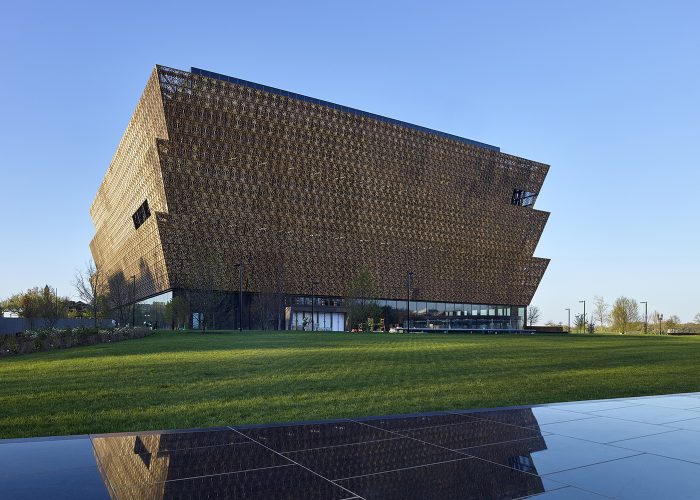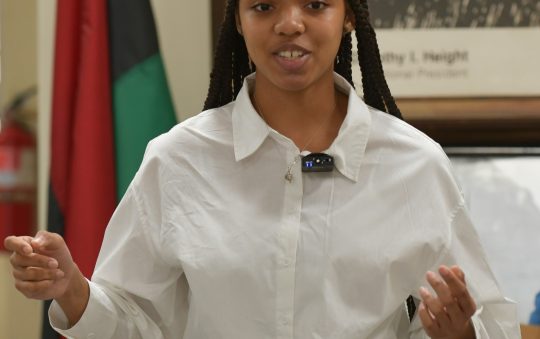
WASHINGTON (AP) _ Whether it’s a class on early African-American history, civil rights movements or black pop culture, there’s an exhibit for that at the Smithsonian’s newest museum.
And schools are penciling in the National Museum of African American History and Culture to give students a real-life look at the past as well as a tangible representation of the places and people in their textbooks.
While the museum has programs like an education initiative to benefit children 8 years old and younger, college professors and their students also plan to use the museum.
Jonathan England, an African-American studies professor at the University of Maryland, said he looks forward to adding a field trip to the museum into his curriculum.
“I want to be able to touch this topic and really go there and have students be exposed to it because it’s different listening to Jonathan England talk about it in a class versus seeing it,” England said. “It’s just something that adds to the academic environment.”
At Howard University, Msia Clark also looks to incorporate the museum in her African studies classes.
“One of the assignments I have in most of my classes is students have to go to an event that’s related to Africa,” she said. “One of the options is also to go to the museum _ whether that be the African art museum or the African-American museum. That’s definitely something that I’m encouraging them to do for their assignment.”
No matter the class subject, the museum has something to offer every student.
The chronologically-arranged floors of the museum resemble walking through history, as visitors begin in the basement with the slave trade and navigate their way up to contemporary America.
Along the journey, artifacts and memorabilia tell the many stories of African-American tragedy and success in this country.
Although the museum has nearly 37,000 artifacts, one item in particular is special to Jason Nichols.
“My family actually donated something to the museum _ the Joseph Trammell Freedom Papers, which Lonnie Bunch, (the museum director), said (was) his favorite exhibit in the entire museum,” said Nichols, an African-American studies lecturer at the University of Maryland who visited the museum. “Of course that was a big highlight for me, being that Joseph Trammell was actually my five-time great uncle.”
Other notable artifacts include Regina Egertion Wright’s diploma from the Colored Training School in Baltimore; a ticket from Washington, to Montgomery, Alabama, for the Selma-Montgomery March in the spring of 1965 and was part of the Civil Rights Movement; and desks from the Hope School in Pomaria, South Carolina, one of the many rural schools built for African-American children and financed by educator Booker T. Washington and philanthropist Julius Rosenwald.
Michael Durso, president of the Montgomery County Public Schools Board of Education, predicts that many local schools, along with MCPS, will be trying to get into the museum in the coming months. He specifically highlighted the hands-on exhibits that would appeal to school-age children.
“I was really struck by some of the activities that were interactive, which the young people of school age and elementary age were able to get involved with,” Durso said. “I think that will help spur interests with our younger people who are more attuned to that than parents or grandparents.”
Baltimore County Public Schools also are looking to make field trips to the newest Smithsonian.
“We are excited about the opening of the African-American museum and the many educational opportunities it affords our students,” Edie House-Foster, manager of public information for the Baltimore City Board of School Commissioners, wrote in an email. “I am confident that in the days ahead our school leaders will be exploring the many ways the museum can support teaching and learning in the classroom.”
In addition, Clark said she hopes the museum will “help shape the narrative and correct some of the misconceptions.”
“I just really hope that the museum serves as a tool for teachers _ especially K-12 _ who don’t know much themselves about African-American history and culture so they are, therefore, really unable to teach it,” Clark said.
Mark Stout, the secondary social studies coordinator of the Howard County Public School System, said he wants teachers in the district to use the museum’s online resources to help aid their classroom discussions. Stout highlighted the vast collection of photographs depicting all different aspects of African-American life.
“The museum is designed very interestingly,” Stout said, “in that it shows not just heroes and famous people from our African-American past, but also the lives of everyday people, which kind of reflects what we try to do … with students, and that is look at history through the eyes of the people that lived it.”
Some of the museum’s content is not appropriate for all audiences.
A sign warns visitors that exhibits with a red border around them may be too graphic for younger or more sensitive viewers, as the museum does not shy away from difficult topics.
“I think it’s important to remember that, a lot of times, we talk about the problems facing African-Americans,” Nichols said, “but now we can look at, despite that peril, how African-Americans have triumphed over the years and how they’ve overcome so many obstacles … And it’s mainly been due to the efforts of African-Americans. No one saved them; they did it on their own.”







